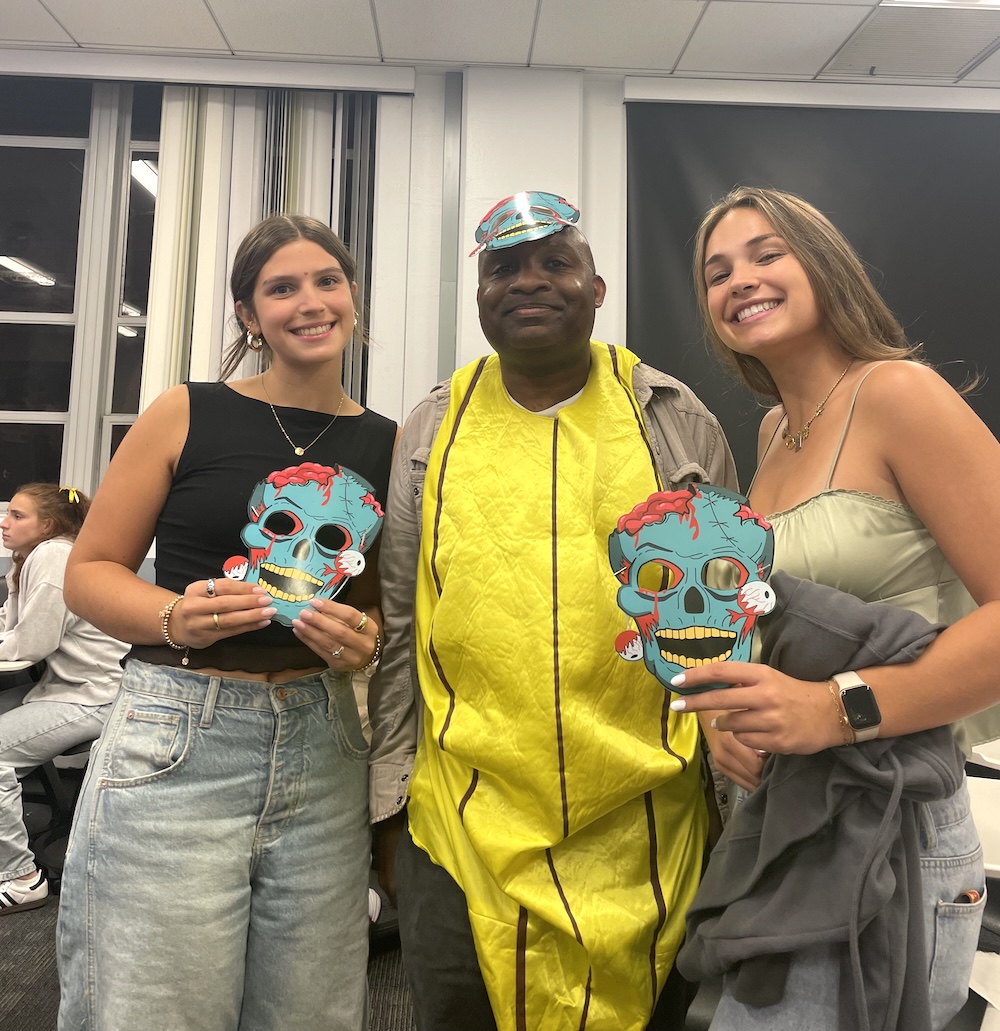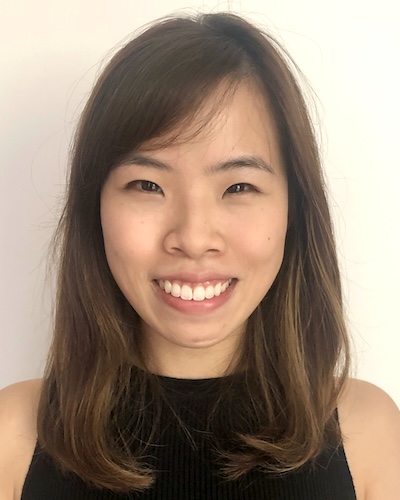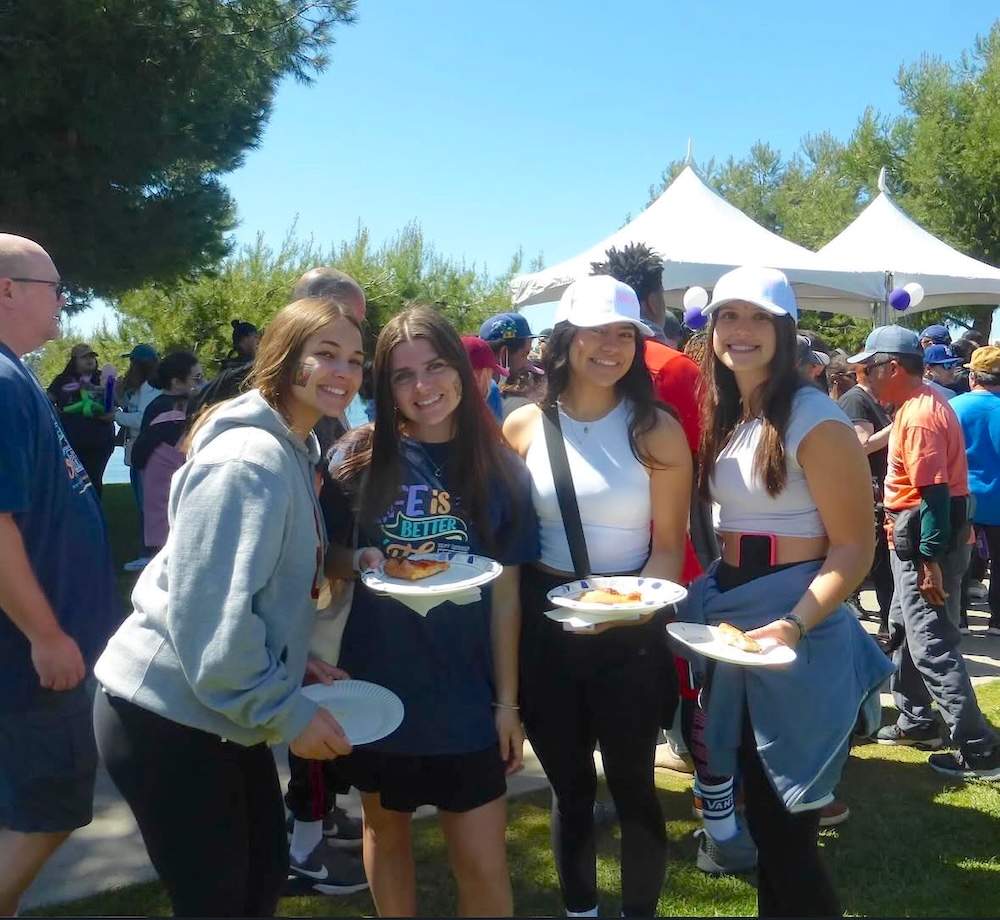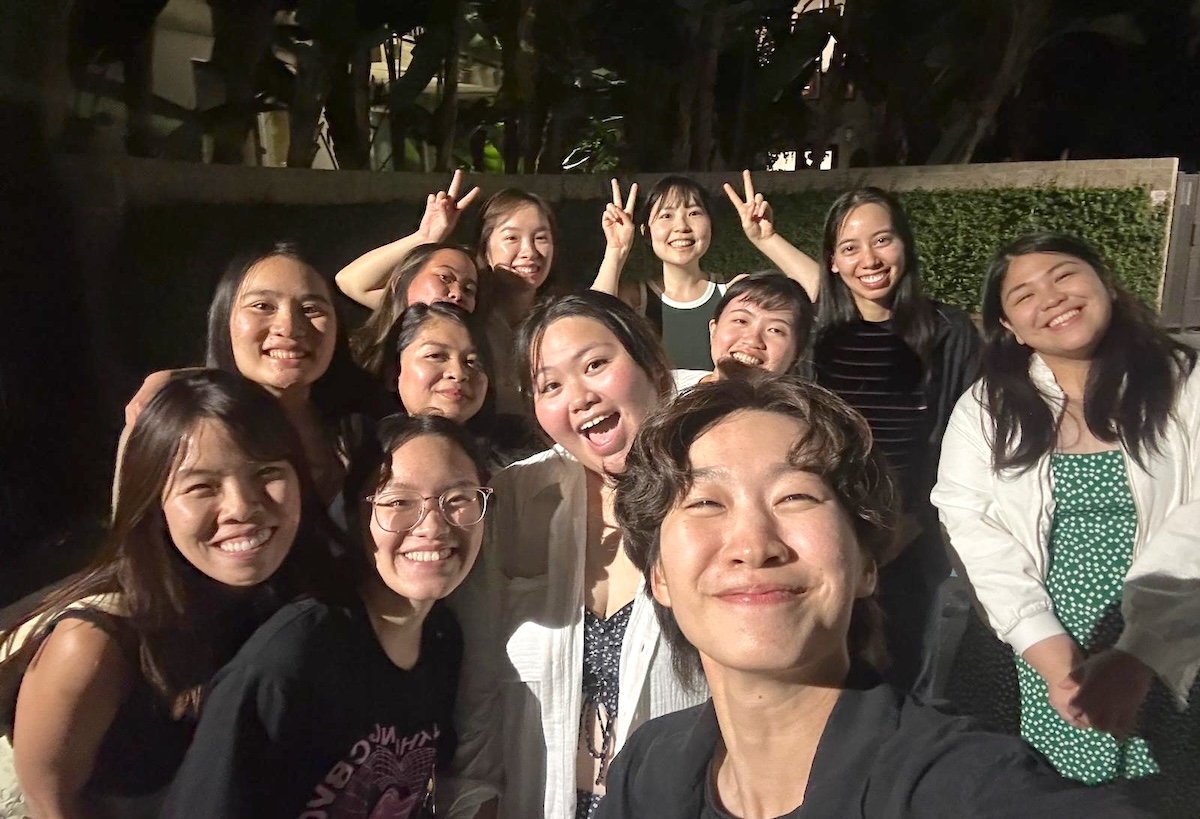Student Blog
Community

Looking to get involved? Check out one of my favorite clubs at USC ⟩
February 9, 2025, by Avery
Community Getting Involved
When arriving at USC (as an undergraduate or graduate student), getting involved in student organizations can feel daunting and overwhelming. There are 100s to choose from — and attending meetings can feel intimidating or stressful to balance with the demands of a large school workload.
So . . . let me make it easy for you! If you are passionate about working with individuals with intellectual and developmental disabilities (as many OTs are), one of my favorite student organizations that I am a part of is the USC chapter of Best Buddies Club.
Best Buddies is an international nonprofit organization dedicated to creating opportunities for friendship, leadership development, and inclusion for individuals with intellectual and developmental disabilities (IDD). It operates through programs in schools, workplaces, and communities, fostering one-to-one friendships, job placements, and leadership training to promote social inclusion. It is very common in high schools across the country, but USC is lucky enough to have our own chapter!
Essentially, there are meetings every other week in which USC students socialize with adults with intellectual and developmental disabilities from Los Angeles for an hour. In the past we have done fun activities such as gingerbread house making, gone to basketball games, crafts, baked, and played board games.

Best Buddies club watching a USC women’s basketball game together

My buddy, Renard, gingerbread house making

Baking together!
Last year we went to the Los Angeles Best Buddies friendship walk, where Best Buddies chapters come together from across the state to broaden friendships and to raise money for the Best Buddies organization. This event happens every April and was a highlight of my year.
Some pictures from last year’s friendship walk (click to enlarge)!
I absolutely love this club and recommend it for so many reasons.
Best Buddies is filled with occupational therapy students — both graduate and undergraduate — creating a vibrant, supportive community of future OTs, professionals in related fields, and genuinely kind, uplifting people. For anyone interested in careers in healthcare, education, occupational therapy, or social work, this club offers invaluable, hands-on experience working directly with individuals with intellectual and developmental disabilities (IDD). Beyond that, it’s an amazing opportunity to connect with passionate advocates and like-minded students who share the same dedication to inclusion and making a difference.
Best Buddies truly creates lasting friendships, and I find that everyone in the room is smiling for the full hour. I often text back and forth with my buddy in the time between meetings. By promoting inclusion and acceptance, this club directly contributes to creating a more inclusive community. You can truly see the difference you’re making in someone’s life — and they make a difference in yours!
Additionally, being a buddy is a relatively low commitment. One hour every two weeks is super easy to fit into my schedule as a busy student. Plus, joining is super easy — you just show up! When you arrive you get put on the members list, and you can then choose to have a one-on-one buddy pairing.

This is my buddy, Renard (dressed as a banana for our halloween party). We both love music, food and animals!
Check USC Best Buddies out on Instagram to learn more info and stay up to date on upcoming events.
If you have any questions at all, do not hesitate to reach out to me! We are always accepting new members, and would love to see your face at the next meeting!
⋯
What I Learned in a Week as a Medical Volunteer in Panama ⟩
December 13, 2024, by Guest Author
Classes Community Diversity Getting Involved International
By Carly Martinez OTR/L, USC Chan Post-Professional OTD student

Carly Martinez OTR/L
When you read the name of the country Panama, what comes to mind? If you’re anything like me until about a month ago, your knowledge consists solely of the famed Panama Canal. After spending 8 days there as a medical volunteer, I won’t pretend to be an expert, but I can give you a brief glimpse into my journey.
During the first semester of my post-professional OTD, I decided I would take what I thought would be my final elective, MEDS 577, Global Palliative Care with Dr. Ben LaBrot. It felt significant for me as a practitioner because I had learned a little bit about hospice and palliative care through my master’s program at USC, and knew that occupational therapy (OT) had a role to play in that area. At the same time, it still felt like we had only skimmed the surface. Through that course, I learned a lot about autonomy and dignity, values my professional OT education had espoused, however, this was a deeper dive into this particular context.
A few weeks into the course, Dr. LaBrot shared that he would have to record class since he would be in Panama. After class the following week, some students stayed after class to ask the professor about another course he taught. While unintentionally eavesdropping, I learned that he was the founder of a medical volunteering organization, Floating Doctors, based out of Panama. Excited at the possibility of going abroad again as part of my OT education, I asked if his program accepted occupational therapists. He was enthusiastic about my participation and clearly an ally of occupational therapy through what he shared in the curriculum. It would count as my final elective, and I could get credit for volunteering through MEDS 554.

Volunteers for the week including physicians, a veterinarian, a dentist, medical students, and one OT.
Months later, I would find myself in a rainforest, translating for a classmate who graduated from medical school in Indonesia, learning how best to explain things to individuals who grew up in a completely different context than myself. Floating Doctors works with the members of the Ngäbe, an indigenous population in the Bocas Del Toro province of Panama. This region is designated as part of the Ngäbe-Buglé comarca, an officially recognized province that is part of how the nation is divided, similar to statehood, which allows for self-governance among the indigenous population. To get there, I flew from LAX to Panama City, then travelled to a second, smaller airport in Panama City to fly to Bocas del Toro, an island in the northern archipelago region of the country.

Preparing to land in Bocas del Toro
During clinic, we slept outdoors in the rancho where we provided services in hammocks strung from metal beams and bathed in the river, as do the community members. However, I will say that it was not the most rugged camping experience of my life. We had indoor plumbing, could purchase wifi from a nearby home, and had meals cooked for us by local women. Patients brought goods to sell, like the best chicken empanadas I’ve ever tasted, sizable chicken tamales wrapped in banana leaves, and artisanal breads. Some families told me they walked for a day through the mountainous terrain to be seen by the doctors. Did I mention that the weather hovered around 90 degrees and 100% humidity? The patients came well-dressed, with women in nice dresses and men in polos and jeans. I got the feeling they were dressed up to see us, but also because they would be seen by many other people who were also attending the clinic.

Preparing for a day of clinic. Folks were lined up before we arrived.

A visitor to the clinic wearing a traditionally-adorned dress (photo taken with permission).

Enjoying refreshments (with ice!) with other volunteers in Bocas after a successful week of clinic.
Visitors to the clinic generally fall into two categories: fast lane or chronic. Fast lane is for new or relatively simple cases, such as needing paracetamol to manage fever, albendazole for concerns about parasites, or birth control injections. Chronic patients are seen every three months, as the team returns to each site regularly, cycling through the 28 sites they service. Though the providers change, there is still consistent care for diabetes, hypertension, and asthma, to name a few of the more common conditions. Patients can have their names put on a list for a doctor who comes by to perform cataract surgery as part of another program. Referrals can also be given in cases where a patient requires more or specialist care, such as the case of a 6-year-old girl who seemed to be struggling in school, based on her mother’s description. Though I did an informal writing assessment, she would need more testing to determine if she was reaching developmental milestones, something the organization is not equipped to offer at this time.
To be seen by specialist medical providers, they would need to go to a major town nearby. Although this community had a medical clinic nearby, the resources there were limited. Travel to David, a town with more medical resources, would require a bus ticket and potentially a stay in the city, a prohibitively expensive expenditure for some of the patients. Boquete is closer, though it is not as well-resourced and still requires a bus ticket to get through the mountains on rocky dirt roads, which do not have lights, limiting travel for safety reasons.
This trip felt challenging to my professional identity. As a new practitioner, I worry about the role OT can play in different contexts. The lead medical provider for the week was not familiar with OT, or Ergotherapy as it is often referred to in Europe. He told me that this does not exist in his home country of Russia. The World Federation of OT only credentialed the University of Panama’s OT program last year, in 2023. I wondered about the relevance of the profession to people whose activities of daily living (ADLs) likely consist of more life-sustaining occupations than mine do, such as gathering water or washing clothes by smacking them against rocks in the river, in addition to household management tasks like washing dishes and cleaning the house.
I could see the applications of OT for those who worked cutting bananas, as they suffer from repetitive motion injuries, for children in school, and likely, for individuals with mental health concerns, if I were to speculate. However, I also acknowledge that I don’t really know much about their everyday lives because I didn’t have the opportunity to get to know them in the ways that would be necessary for an OT evaluation. I longed to know more about what an average day is like, as this would allow me to begin imagining what role occupational science (OS) could play in trying to understand what life is like for the Ngäbe. If OS has taught me anything, it is that I am not an expert on the culture of the Ngäbe. In order to work with a population in a way that garners buy-in, one has to try to understand the values to support what is important to their patients.
All of this is not to paint a picture of an area with fewer resources; after all, there are rural areas of the US with limited access to hospitals or routine medical care. Instead, I hope that Panama provides opportunities for OT and OS to continue to develop in multiple contexts, ranging from the traditional academic experiences OT graduates may have in the larger metropolitan areas, to the volunteer OT services with Floating Doctors, as well as others yet to come.
For my final occupational therapy doctorate (OTD) project, I created a set of OT practice guidelines or a white paper, in support of the development of OT services for Floating Doctors. The hope is that this will allow for the expansion of OT services within the organization, encouraging more OT volunteers to attend, and familiarize the individual medical providers with the scope and potential interventions OT can provide. It will also be part of the information Floating Doctors provides the Panamanian government to continue its services there.
⋯

Day In the Life of an Undergraduate BS-OTD Student Vlog ⟩
December 10, 2024, by Avery
Classes Community Getting Involved Living in LA School/Life Balance Videos
Join me as I take you through what a typical day looks like as an undergraduate student in USC Chan’s accelerated Bachelor’s to Doctorate program in Occupational Therapy! One of the things I love most about this program is the balance it allows me to strike between my occupational therapy (OT) courses, engaging electives, general education classes, extracurriculars, and free time.
From participating in enriching clubs and student organizations to spending quality time with friends and exploring the vibrant city of Los Angeles, I’m able to enjoy a well-rounded college experience while still focusing on my OT studies.
As always, if you have any questions about the BS-OTD program from an undergraduate perspective, feel free to reach out!
⋯

Connecting with OTs ⟩
November 16, 2024, by Kimberly Rochin
Community Life Hacks
Let’s face it: occupational therapy is an incredible field that’s evolving and expanding daily. The beauty of OT lies in its versatility, allowing therapists to address patient needs at every life stage and in almost any environment. Yet, with so many specialties and settings, it’s hard not to feel a bit of F.O.M.O.
That’s where building connections comes in. Networking with other professionals in the OT community can open up insights that enrich our learning. I’ll share practical tips and strategies for connecting with professionals that worked best for me!
1. Do Your Homework
Before reaching out, take a few minutes to learn about the person. Knowing a bit about their background and interests shows that you’re genuinely interested and can help you connect more meaningfully. Some great platforms are LinkedIn, the individual’s affiliated organization (for example, clinics or hospitals), or even just a quick Google Search. You don’t need to know ALL the information about them; you can just bounce back from a few pointers.
2. Be Intentional
Make your outreach purposeful. Think about what you hope to gain from the connection (e.g., insight into a specific setting or advice on a skill), and communicate that. By practicing intentionality, you are respecting the recipient’s and your time!
3. Email/Point of Contact
Don’t underestimate the power of a well-crafted email! A friendly, concise message can open doors to meaningful connections. Remember to introduce yourself and be clear about why you’re reaching out.

Example outreach email
4. Be Okay with ‘No’ and Flexible with Schedules
Professionals are busy, so don’t be discouraged if someone can’t meet immediately. Respect their schedule and offer alternative times. Patience and flexibility go a long way in showing your appreciation for their time.
5. Scheduling
Offer specific times you’re available to make scheduling easier. Once you’ve confirmed, show up on time and bring prepared questions. If you’re juggling multiple meetings, use a scheduling tool to streamline the process. It keeps things organized and helps you avoid double-booking — showing that you value their time and your own. I use the “Appointment Schedule” feature on Google Calendar. Not only does it make scheduling easier, but I have also received several compliments about my organization!
6. The Meeting . . . OooOOoo
There’s no need to be nervous; just relax and enjoy the conversation! If you’re meeting virtually, ensure you’re in a distraction-free environment with reliable internet and present your best self. I find it helpful to jot down a few bullet points of topics I’d like to discuss; keeping them brief ensures the conversation feels natural (remember: it’s not an interview!).
If you’d like to take notes, let the professional know beforehand. This way, they understand you’re focused on the conversation and aren’t multitasking. Small steps like these can help create a comfortable environment for a productive meeting.
7. Follow Up with a Thank-You
Always follow up with a thank-you email or note. It’s a simple yet impactful gesture that reinforces your appreciation and can leave a lasting positive impression. If you would like to continue connecting, indicate that in the email.
8. Final Thoughts
While these tips have worked well for me, remember that each connection is unique, and there’s no one-size-fits-all approach. Building meaningful relationships in the OT community takes time, patience, and a willingness to adapt. Be open to learning from each experience, and don’t be afraid to try new approaches. So, go out there, make connections, and enjoy learning!
⋯

From Worker to Student: A New Occupation ⟩
September 26, 2024, by Tanya
Beginnings and Endings Community International Life Hacks Living in LA School/Life Balance
It is week 3 of school and perhaps with the exploration of Occupational Science, it made me reflect about the current journey I’ve chosen to embark on; a new occupation. I am no longer a working adult but one who is back in school — an adult student. It has been approximately a month since I said goodbye to the familiar, the known and the expected. Things are no longer as familiar, and navigating through this change has not been the easiest, to say the least.
I have stepped into the unknown and the unfamiliar in the decision to pursue the Post-Professional Master’s degree here at USC Chan, and if I were to use the Person-Environment-Occupation (PEO) Model (Law et al., 1996) to frame my life, you could say that I am still learning to maximize the fit to attain the same occupational performance I had back home. There is not just a literal change, in the physical change in environment, but also a change in my social environment. Social supports that I could turn to immediately had a 15 hour time difference. Even though this is not the first time living alone in a foreign country, it does not get any easier. There are some days I still get teary looking at pictures or Instagram videos and wish I could teleport home to be part of a special event, to comfort a friend or just to get a physical hug from a loved one. Leisure activities which I could engage in frequently are harder to access as I do not drive, or are things that I could not bring over (e.g., my sewing machine).
Even the most simple things require unlearning and relearning — take the metric systems — I am still learning how to convert Fahrenheit to Celsius, Pounds to Kilograms and Miles to Kilometres. It does get better with practice and of course, consulting with Google Converter, especially when I am at the grocery store, has been such help to me. Exploring the transportation systems might be a little tricky, but I am thankful that I got the chance to explore with my course mates, who are becoming a different sort of support system.
Having a new occupation as a student comes with new expectations and responsibilities. I used to read journal articles that I received from my monthly BJOT subscription or when I was reading up on the evidence of interventions that I would like to use. However, being a student means reading and trying to synthesize the contents of the articles for each module that you take. Living alone also means that that are other things you need to manage and set aside time for, such as meal-prep, household chores, figuring out how the dryer works and grocery runs.
Here is another picture of us on our longest day of classes and testing out a classmate’s new digital camera
Though the Occupation and Environment has changed, one thing that remained constant is the Person (that’s me). The changes might seem overwhelming initially but your abilities that enabled you to navigate the challenges, difficulties and new seasons in your life in a place of familiarity and comfort do not change amidst the change in the environment. The routines that you have created for yourself back home can also be replicated here — it just takes a little time to figure and analyse what is better and suitable. I’ve resumed my curiosity in cooking and explored the different dishes and cooking hacks on social media. This has not only provided me with affordable and delicious meals, but it has been a nice and relaxing activity and a way for me to connect with my housemates.
Being a planner, I have plans to crochet and hit the gym with my house/course mate Kate — we will get to it soon! Being away makes you grow as an individual as you reflect and learn to see things from a different perspective — who knew that just having dinner and chatting by the pool with friends is something so enjoyable and refreshing, an activity that I hope will be part of my new routine. Change is hard but it can also be an experience that will shape, develop and make you a better OT as you view things from new and different perspectives. It is also important to be intentional, not just here, but with the people back home, technology in this case is truly a blessing. Being 8811 miles away does feel shorter with the texts and calls.
One thing I am thankful for are my course mates, they make home feel a little less far. My new social environment, but one I am thrilled to share the remaining year with as we learn, laugh and eat together.
Here is a photo at the end of the first week of school with some of my coursemates and housemates. What is missing from the photo is the food people cooked — amazing cuisine from Taiwan and Philippines!
Stay tuned if you are interested in finding out what my remaining year will be like as a new adult student — I personally know it will be an amazing one and one that I will proudly say that I have maximized the PEO fit at the end of it.
Reference
Law, M., Cooper, B., Strong, S., Stewart, D., Rigby, P., & Letts, L. (1996). The Person-Environment-Occupation Model: A transactive approach to occupational performance. Canadian Journal of Occupational Therapy, 63(1), 9–23. https://doi.org/10.1177/000841749606300103
⋯













